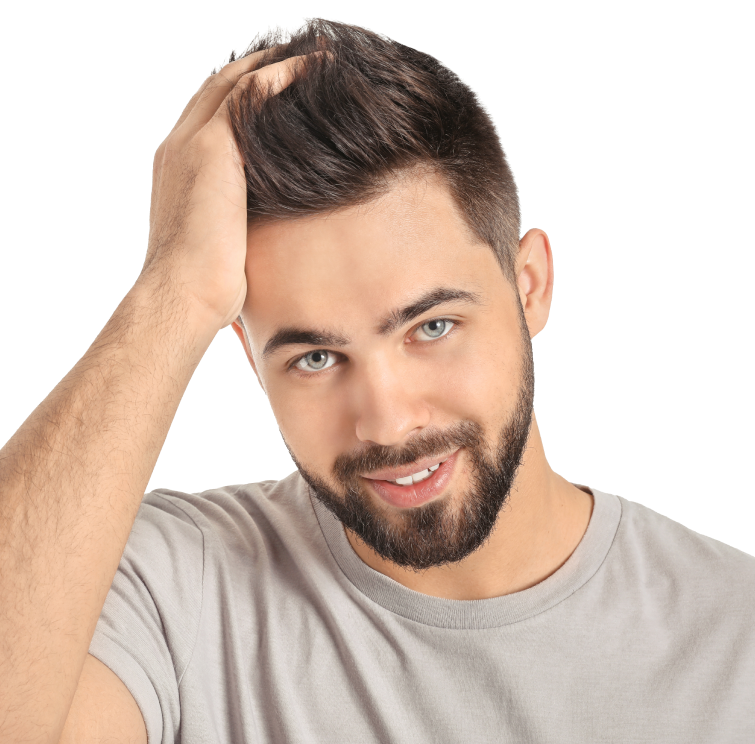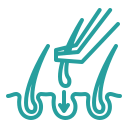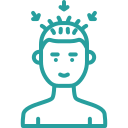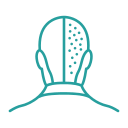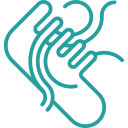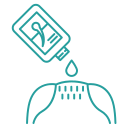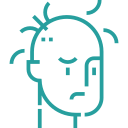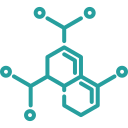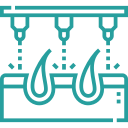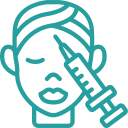Minoxidil
About Minoxidil (Rogaine)
Minoxidil and Pattern Baldness Minoxidil is an effective medicine for preventing hair loss and paving the way for hair growth in women and men. The first FDA approved medication for the treatment of hair loss was Minoxidil. It is also known as Rogaine. It was the only topical product that is FDA-approved for androgenic hair loss. Upjohn Company developed Minoxidil in the late 1950s.
Minoxidil is a topical solution that is applied directly to the balding scalp. It is available over the counter and in generic formulations in concentrations. For men the concentration is 5% and for women it is 2%. Initially it was a medicine known to deal with high blood pressure levels but later it got popularized for preventing hair loss and growing hair. It was observed that when minoxidil was applied topically on the bald areas of an individual’s head, some hair growth took place. It was a revolutionary medicine at the point of time when this discovery was made.
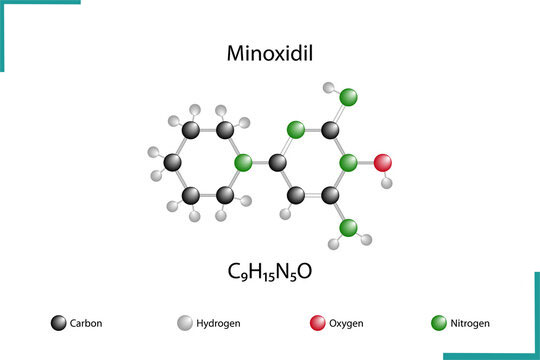
In both female and male pattern baldness, what happens is that your hair follicles shrink over time. This results into stagnation of hair growth. So when your hair are combed the existing hair fall out giving way to hair that are thinner in density and shorter in length than the existing ones.
Areas Most Effectively Cured
When trials were conducted with Rogaine, they were first conducted on the crown of the head and it was considered that its effectiveness was only limited to that area. Though that’s true to a certain extent that minoxidil works best in the crown region, but it also proven to be effective in other areas, like the frontal of the scalp, provided there are few hairs in that region. The areas that are completely bald will not be affected by Minoxidil . The Minoxidil show greatest benefits from 5 months to 2 years. After 5 months to 2 years there will be a gradual decrease in effectiveness. The hair-loss rate becomes slower for those who use minoxidil for long-term.

Though minoxidil is known to facilitate hair growth and combat hair loss, it's unclear as to what impact it has on the molecular mechanism operating within the cells of hair that cause hair growth. According to a theory minoxidil is known to dilate the blood vessels near the hair follicles, which increases the nutrients supply in the region and results in hair growth. Follicles in the telogen phase started to shed, which are then replaced by thicker hairs in a new anagen phase. But this theory isn’t a proven one since vasodilator drugs apart from Minoxidil don’t promote hair growth. There’s another theory which justifies how this drug might be promoting hair growth. When Minoxidil is applied topically, it results in an increase in DNA synthesis in hair cells. Though is it an inactive drug when it isn’t applied but it changes its properties when it is absorbed by the skin of the scalp and converts itself into ‘Minoxidil Sulphite.’ Our body is known to produce a catalyst named sulfonyl transferase which modifies the inactive Minoxidil into the active Minoxidil Sulphite. Minoxidil sulphite in turn switches on the potassium channels present within the hair cells which leads to hair growth. Though there is no clear cut evidence for the reason why Minoxidil facilitates hair growth, but it does to varying degrees.
It is advised to apply Minoxidil (1 milliliter) once or twice a day. It’s only known to function when it comes in direct contact with the scalp for around 4 hours duration. It’s essential that you apply the medication at a spot where the hairs are still present. It’s ineffective in areas that have gone completely bald. Topical use of topical minoxidil 2% and 5% once a day seems effective. It is as effective as using it twice a day. The reason is, when applied topically, it has a half-life of 22 hours in the skin. Once a day dosing is a reasonable option as it suggests. It is important to realize that, Pfizer the company that now makes Rogaine, specifically states that it will be less effective if used only once a day.
On discontinuation of Minoxidil, the hairs return to their previous state in around 3 months duration and hair loss resumes. It is not advised to stop the medication once you have started using it since you wouldn’t be able to recover the hair that are lost upon its discontinuation.
Though it’s a great medication to restrict hair loss and promote hair growth yet it does have some side effects as well. They may range from burning, irritation of eyes,redness, itching, or irritation at the treated spot and hair growth on other parts of the body. It is advised to patients to discontinue its usage and treatment if they experience severe allergic reactions like hives, rashes,tightness in the chest, itching, difficulty while breathing,,swelling of mouth, face, lips, or tongue, chest pain, dizziness, nausea tic feeling , tachycardia (rapid heartbeat), sudden weight gain, swelling of hands and feet.
It’s also known that Minoxidil initially causes hair loss which is known as ‘shedding’.
Minoxidil slows down the process of hair loss or even stops it in certain cases. Applying minoxidil for a longer duration can facilitate hair growth in areas which were previously scanty. Four to six months application of minoxidil is known to produce excellent results for preventing hair loss and thickening existing hairs.
